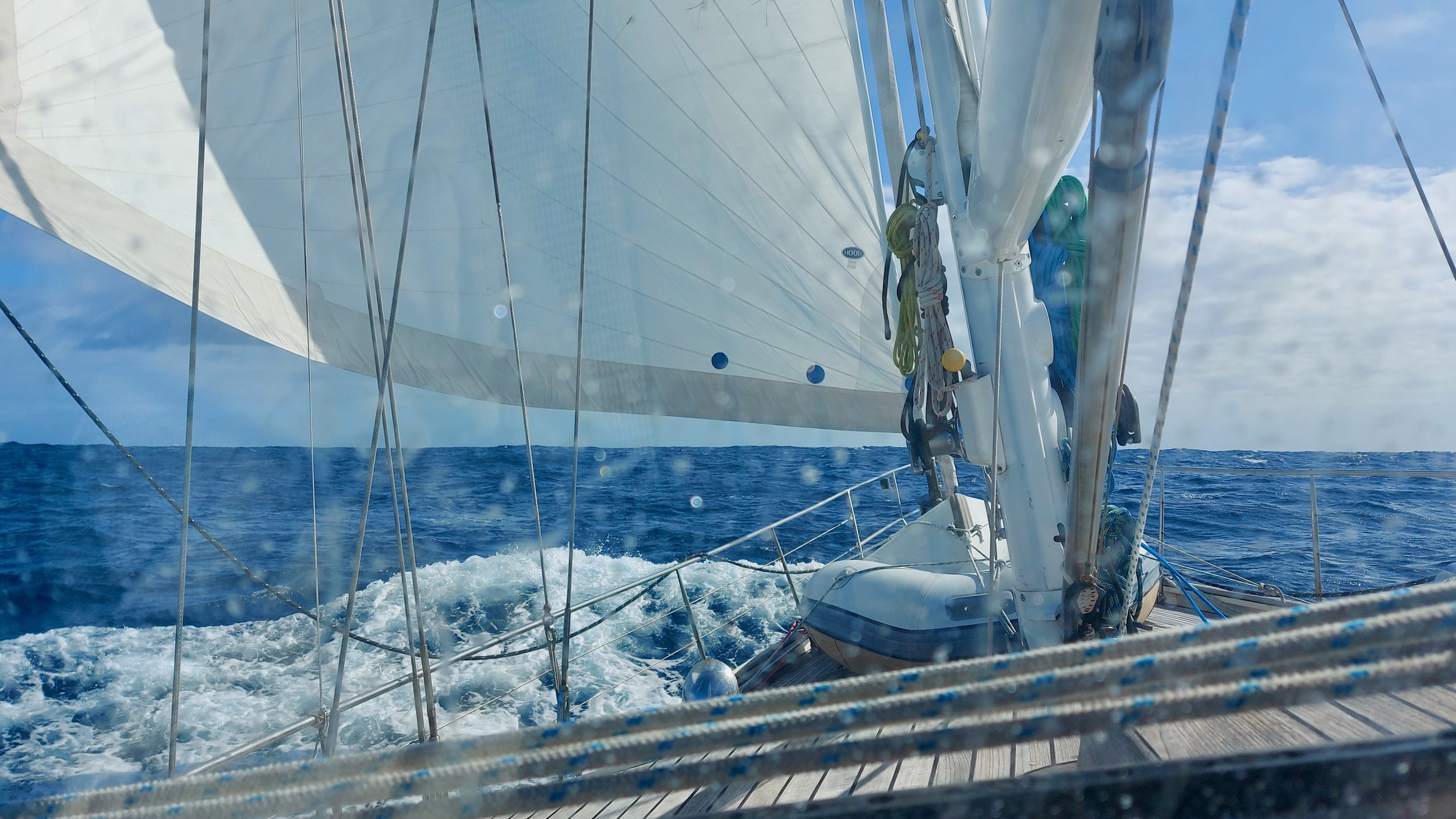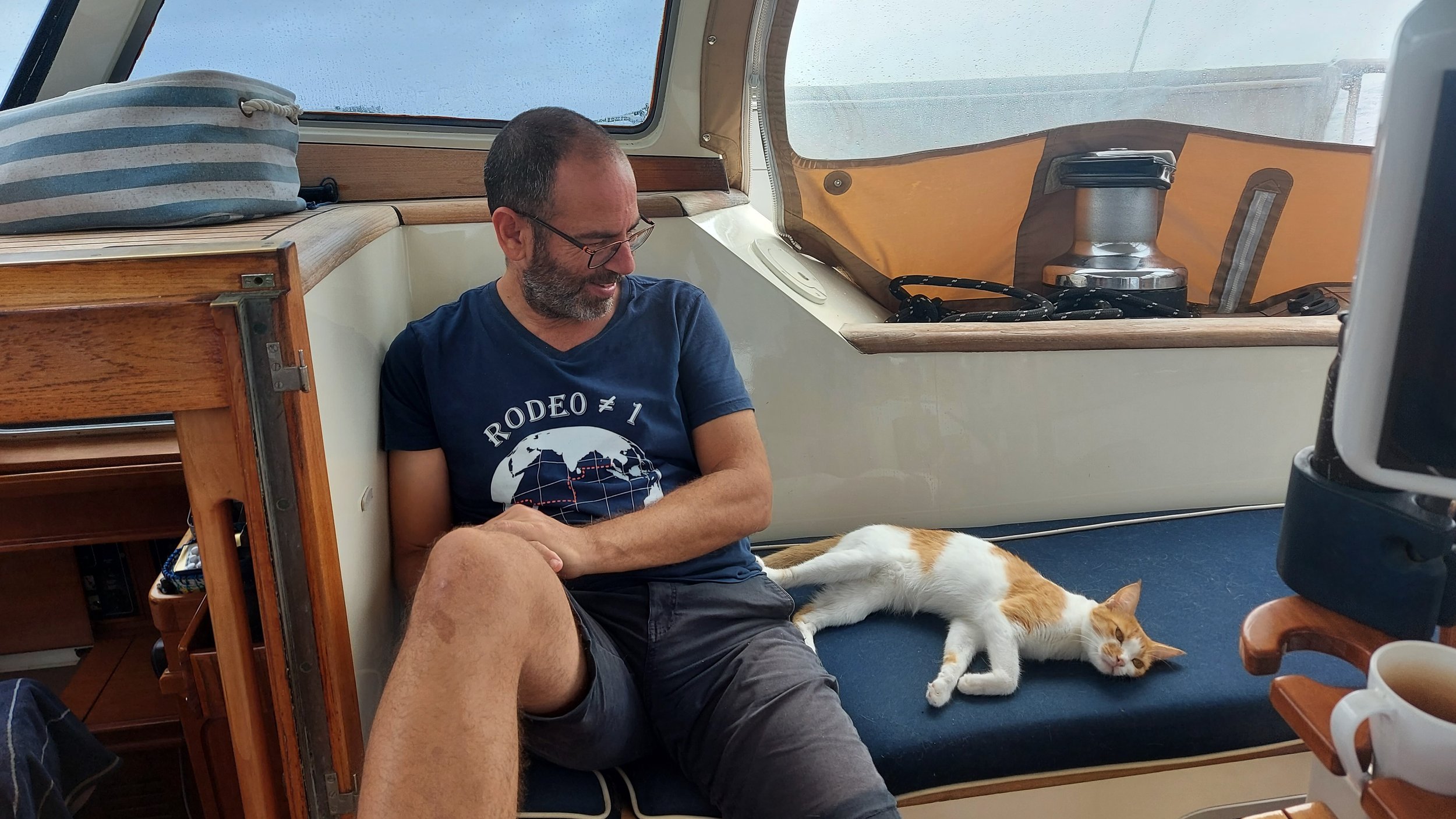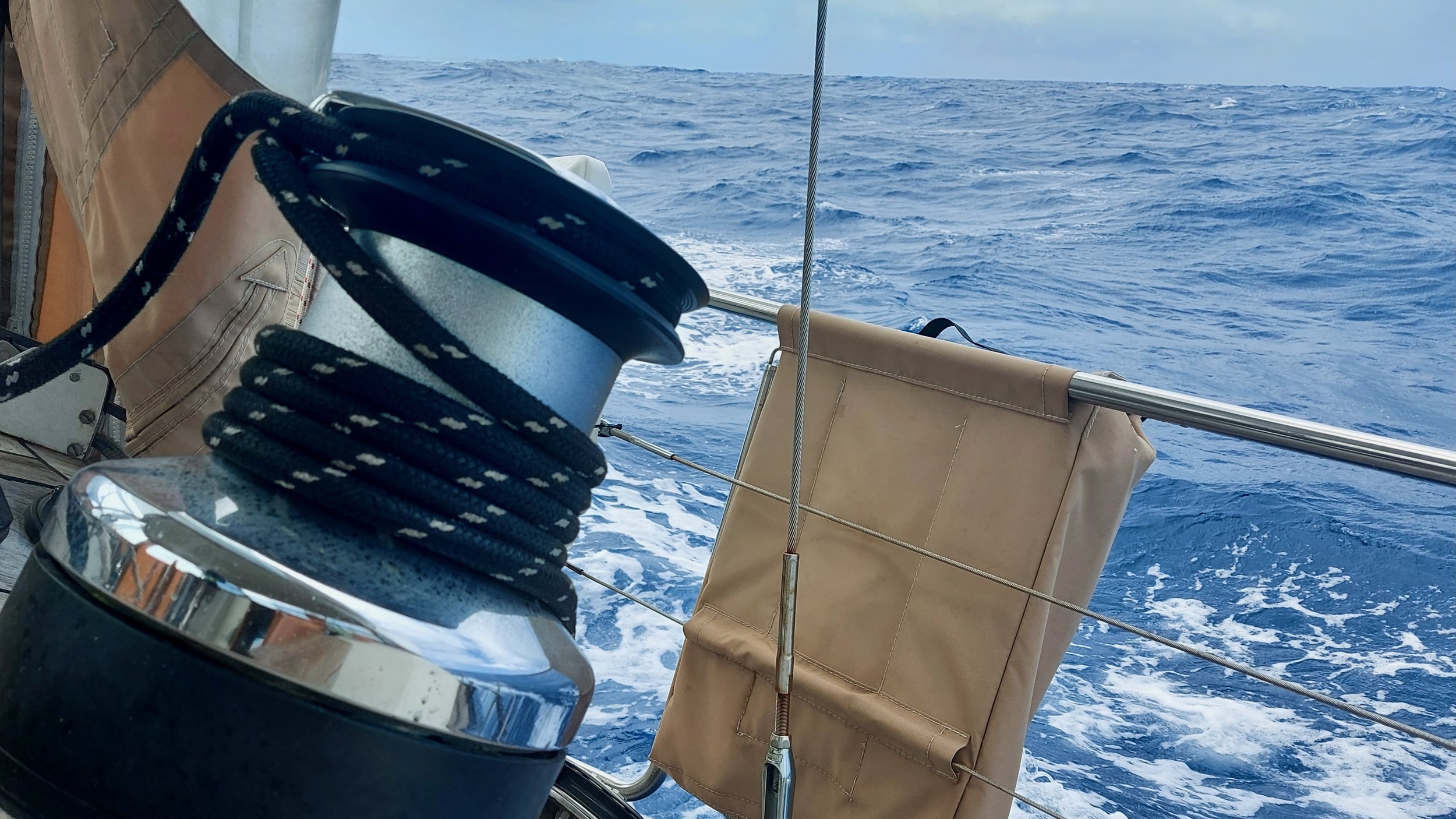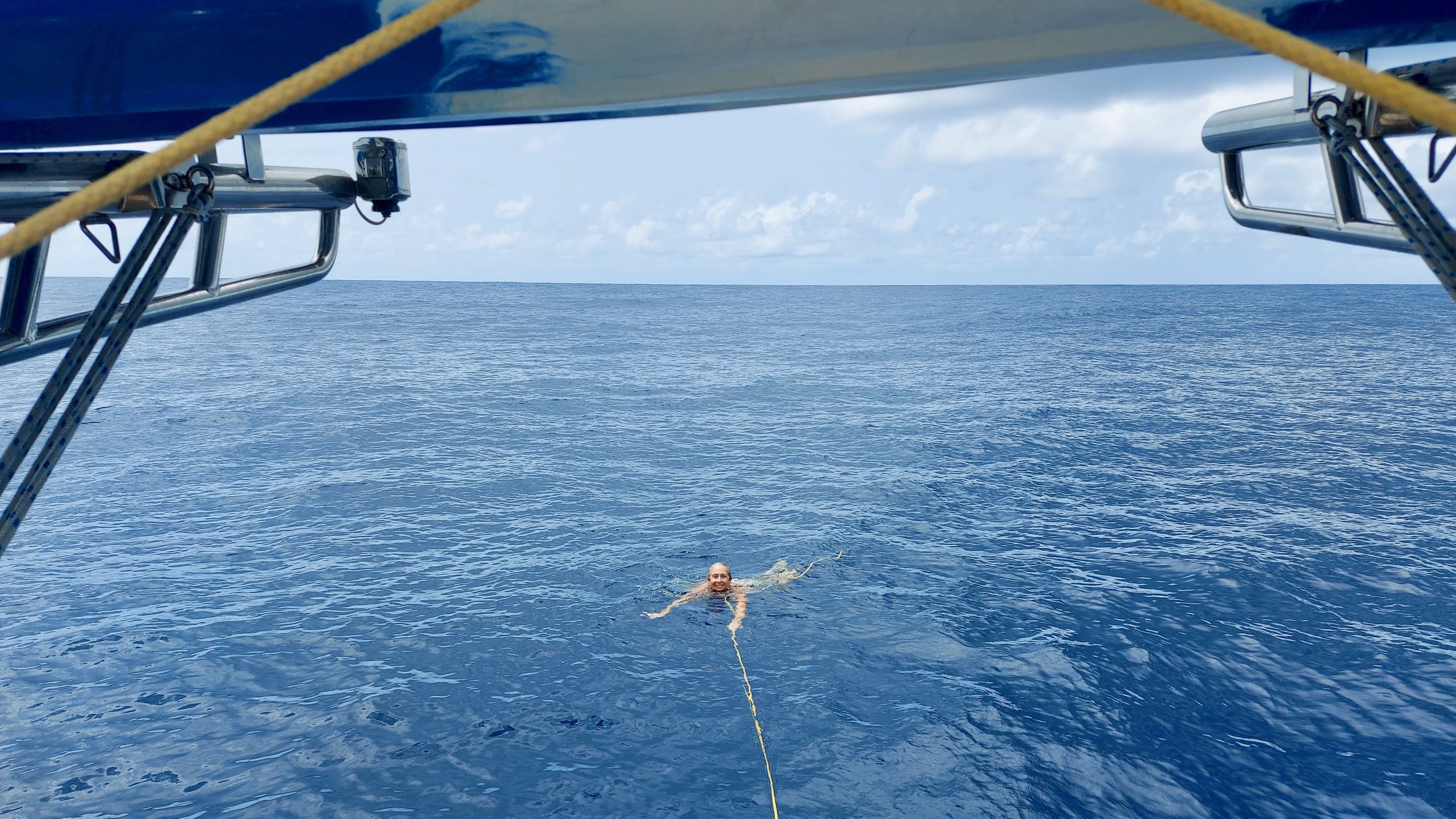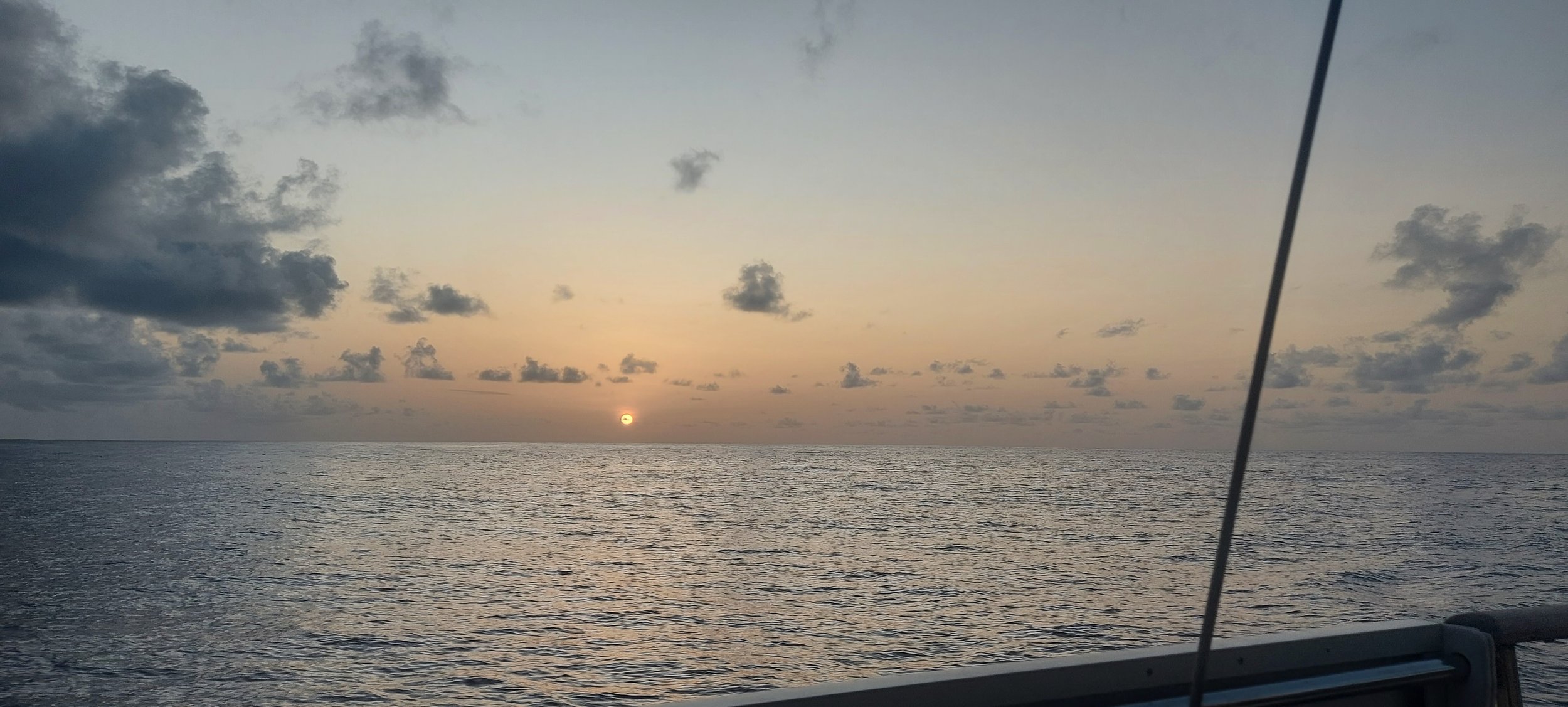Ready for Battle
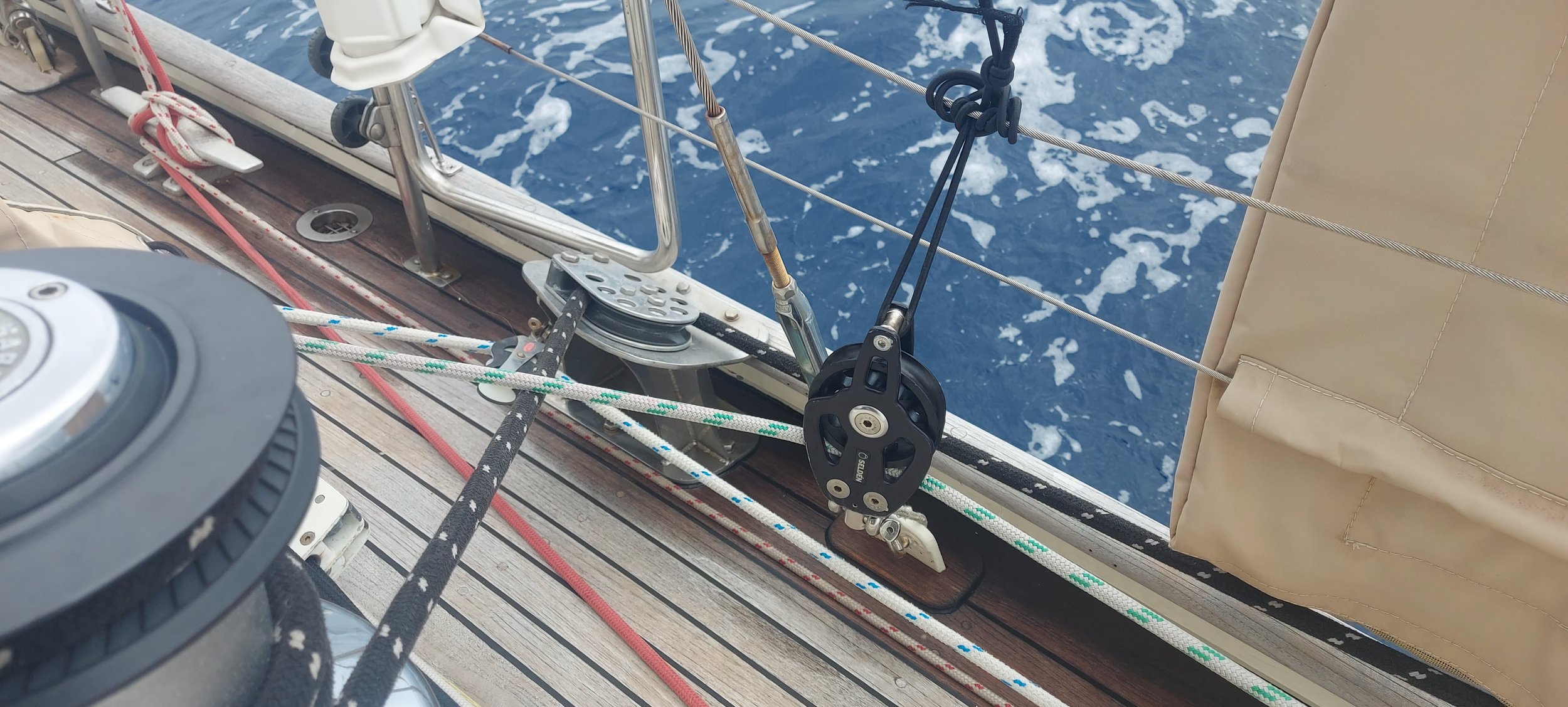
Day 10 : Ascension Island to Azores
Sunday, March 27th 2022
Our last day before starting the long windward beat was all about final preparations, starting with some final cooking to get the freezer full.
We now have 59 individual serves of different dishes in foil trays in the freezer, as follows:
13 x Chilli Mash
7 x Mac Cheese
6 x Thai Green Curry
7 x Pumpkin/Bacon Risotto
6 x Chicken Leek Risotto
4 x Fish Masala Curry
4 x Pork Stew
4 x Fusilli Bolognaise
3 x Thai Red Curry
2 x Butter chicken
2 x Chicken Tikka Masala
1 x Seychelles Creole Chicken Curry
We’re not going to starve on this trip, that’s for sure.
Every day we each choose a dish from our menu that we fancy for dinner, and take the trays out to defrost – that way we save some gas, rather than cooking from frozen. When we’re ready to eat, we bung them in the oven and 20 minutes later – voila! Total time spent in a heaving, pitching galley is less than 2 minutes, and we have a nutritious and delicious meal.
If it’s rough or we’re feeling especially lazy, we’ll eat them straight from the foil tray, so we have no dishes to wash up later and save on some water making time.
Pre-preparing in this way also helps us to get some veggies in our diet – as per an earlier post, we’re now pretty much out of fresh food, and with at least another 3 weeks to go, and possibly more, at least we will be able to fend off scurvy!
We also took the opportunity to find a much-needed solution to a problem that has been bothering me for a while.
Since we’ll be on a starboard tack non-stop for the next two weeks, that means that our port primary winch will be fully engaged the entire time with the genoa sheet. But that’s also the winch we prefer to use to furl and unfurl the mainsail, as it’s electric. We don’t have to – the mainsail furler has it’s own dedicated winch, but that one’s manual, and life is MUCH easier if we only have to push a button.
It’s not just a case of laziness – using the manual winch is a two-person job, as the clew outhaul has to be managed simultaneously. And with the size of the mainsail, in the kinds of winds where a reef is required, it’s a both hands job to be winding the furler on the winch. But when using the electric winch, one finger manages the furling, and the other hand can be easing the clew outhaul. So it’s transformed into a one person job which means no longer any need to wake up the off watch person.
Since we can envisage doing a LOT of reefing, I therefore wanted to find a way to lock off the genoa sheet temporarily while under load, so we can free up the electric winch to use for the mainsail.
And since we’ll be reefing the genoa even more often than the mainsail, I also wanted to find a way to more easily adjust the genoa cars. Typically we can’t move them while the sail is out – there’s just too much load on them., unless we ease the genoa sheet so much that it’s flapping violently, which brings with it risk of damage to the sail, or to us or the boat from the flailing sheet. So on shorter upwind legs, we just don’t adjust them, other than between tacks.
Since we won’t be tacking at all in the next two weeks, we really needed to find a way to adjust those cars every time we reef - it is essential if we want to have good pointing ability while we’re sailing close to the wind.
So the ideal solution would also enable us to remove all load from the active genoa sheet at will, easily and from the safety of the cockpit.
Some boats have a rope clutch that the sheet goes through near the cockpit for just this purpose, but not many. Steely certainly doesn’t.
But after a lot of thinking, and some fun tinkering with the position of blocks, we have rigged up a third genoa sheet, running via two extra blocks, and then through the rope clutch that is typically used for our staysail furler (and which has temporarily been reassigned to a cleat).
The end result – we can pull on the extra sheet in seconds, lock it off, and then ease the primary sheet altogether, allowing for the cars to be moved or the winch to be used for other purposes. The rest of the time, the extra sheet will be lazy, and remains out of the way not fouling any other lines.
It’s a great solution, and one I wish I’d thought of a long time ago.
I now feel a lot more comfortable that we can reef either sail much more easily. When reefing is difficult, you end up trying to minimise the requirement to do so. Which means setting the boat up for the maximum wind strength you’re expecting in any given time period, and then accepting that a lot of the time you’ll be under canvassed.
That’s a more relaxing way to do things, for sure. However, not only is it slower, but when you’re sailing upwind it means you don’t point as close to the wind as you might otherwise be able to.
Based on that, I think this one amendment will save us 1-2 days off the entire trip.
Which means more Chilli Mash left over for us to enjoy on our next passage!!
At 5am today, we reached the waypoint that we’d been aiming at for the last week – 6 degrees North, 22 degrees West – where PredictWind told us that the NE winds would begin.
And guess what? They did – right on cue.
The engine is off, the sails are pulled in tight, and we’re beating to windward for at least the next two weeks. Phase 3 – the Uphill Battle - has begun.
Day 10 Statistics:
Time on passage so far: 9 days, 21 hours
Distance covered in last 24 hours: 114 nm
Average Speed in last 24 hours: 4.8 knots
Official Length of intended Route when we set out: 3,480 nm
Current Projected Distance to Go according to chart plotter: 2,204 (2,316) nm
Distance Sailed so Far: 1,183 nm
Total Projected Distance of Route: (2,204 + 1,183) 3,387 (3,385) nm
Change in total projected distance in last 24 hours: +2 miles. We are now at the point of the journey where I expect to see the projected distance slowly climb. We’ll see.
Motoring hours on Day 9: 22.5
Amount of fuel used so far from 350 litre ITCZ fuel budget: 387 litres (70.5 hours x 5.5 l/h)
Estimated miles to go until end of ITCZ : 0
Amount of fuel remaining – Unsure. At least 650 litres, but possibly up to 150 more – I forgot to take a reading before we started sailing close hauled. Now we’re at a 15 degree heel angle, it’s hard to take an accurate fuel gauge reading. The gauge is reading between 650 and 800 litres, so even if we take the most conservative reading, we’re bang on track.
Number of pennies required to entirely cover Steely’s hull below the waterline, to give a permanent copper-based protection instead of antifoul: 270,000 (special thanks to Matt on S/V Perry, who clearly had nothing better to do with his time yesterday.

